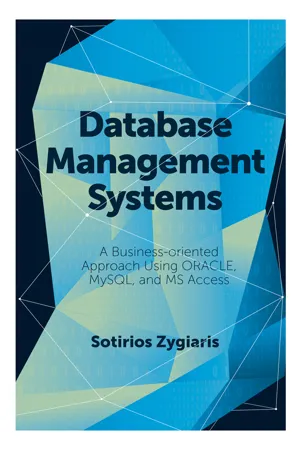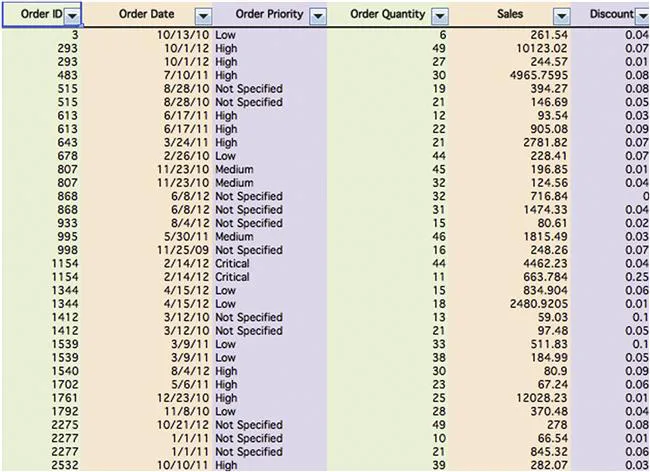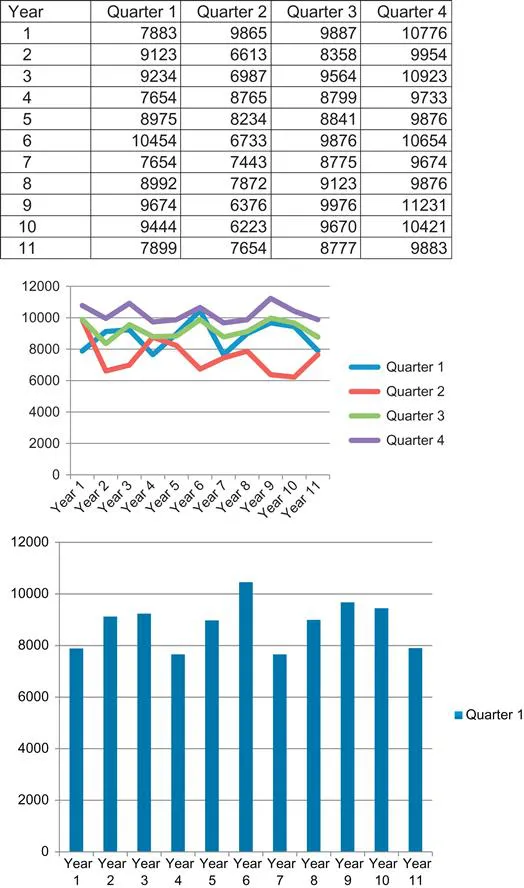1.1. From Data to Information to Knowledge
The first component in the word Database derives from the plural of Latin datum, which means “a given thing.”1 In fact, data are determined as a vast amount of unprocessed numbers, characters, images, and video and audio elements including supermarket invoices, audit videos, location coordinates, the orders taken by sales representatives, and the check-in and checkout timesheets of employees over the past year. In our physical world, an abundance of data is stored in the form of physical records. Companies keep their everyday business transactions in accounting books like accounts payable or the general ledger for many years. Today these data are being kept in digital form.
Data in either physical books or digital files are valuable company assets that document historical facts, verify business transactions, and improve the decision-making process. Although the physically kept data provide important documentation for past business activities, they are difficult to be processed by managers due to the vast amount of paper-based facts. For example, the production manager examines the book of finished orders for the past year consisting per se of 8,000 order invoices. It is impossible to memorize these figures and make rational conclusions about the peaks and gaps in the production lines.
Digital data are processed by computers that have the capacity to memorize numerous data forms and process them using information systems. For this reason, businesses are digitizing physical data to illustrate in full capacity their digital business content. Information systems can “read” numerous digitized data and store them in the memory for processing. For example, in bank transactions, in stock trade price fluctuations, in payments received in ecommerce, all data are stored digitally and they are ready to be processed by information systems. Figure 1.1 illustrates partial data stored in a spreadsheet recording the sales of a superstore. The number of records or rows representing sales reaches, on an average, 3,000 record sales every day. These records are entered in digital form into the superstore’s information system, where they are ready to be processed by managers. This data processing may take different forms, for example:
(1) Can I insert a new sales record with Order ID equal to 890?
(2) What is the sale amount for the order with ID equal to 998?
(3) Can I change order quantity from 22 to 18 for sale with Order ID equal to 613?
(4) Can I delete the sale with Order ID equal to 1761?
Figure 1.1. Sample Data Presenting Superstore Sales.2
Processing data involves every date management that includes data retrieval and transformations that take the form of Create, Read, Update, and Delete (CRUD) transactions.
C | Can I insert a new sales record with Order ID equal to 890? |
R | What is the sale amount for the Order with ID equal to 998? |
U | Can I change quantity from 22 to 18 for sale with Order ID equal to 613? |
D | Can I cancel sale with Order ID equal to 1761? |
The R operation just reads the data without making any modifications to them. The C, U, and D operations modify the data. The benefit of fast accessibility and transactional effectiveness is very important in facilitating business transactions. The most important managerial benefit is taking place when appropriate data processing takes place to support the decision-making process.
Superstore assumes 3,000 sales daily with an estimated number of sales over one million per year. Figure 1.2 represents examples of the generated information for Superstore. This information takes the form of a managerial report for presenting quarterly sales for the past 10 years. Over 12 million sales figures (data) were processed to produce information regarding quarterly sales in a table form. The sales report includes a bar chart for the monthly sales in January over the past year. Quarterly data are illustrated as a histogram to show the linear progress of sales.
Figure 1.2. Transforming Data to Information for Superstore.
All these reports are referred as information. Information is understanding the meaning of data in a manner that reduces uncertainty. The initial claim that “Humans can process a limited amount of data” is verified since managers cannot memorize and handle such a vast amount (millions) of data. The sales figures must be presented in a manner useful to managers to make decisions, which take the form of reported information. The superstore sales manager capitalizes on this information to examine the progress of sales for the past ten years or the historical progress of data for the month of January for decision-making in relation to sales management.
The observation of information in consecutive terms leads to knowledge creation, when managers learn the behavioral patterns of their business. For example, observing the quarterly superstore sales in Figure 1.2, the first quarter sales are relatively high (over 9,500) and the second quarter sales drop significantly (in years 2, 3, 6, 9, and 10). This information leads to specific knowledge as pattern. When increased sales appear in the first quarter, the sales manager must respond proactively to support sales in the second quarter. In the third quarter, sales over 9,000 usually lead to high sales in the fourth quarter (in years 1, 3, 6, 8, 9, and 10). Managers could also act proactively to increase stock levels to satisfy the projected high demand for the fourth quarter.
The derived information benefits a business when it is:
- Accurate. Valid data are the source of accurate information. Data entry methods must be used to ensure the validity of data.
- Complete. Decision-making based on partially available information leads to faulty decisions.
- Updated. Information is valid only for the time interval that data are valid. Any changes in data modify also the context of information.
The transformation of data to information is succeeded through Information Systems. These systems receive data as input, which are processed to produce information, which are in the form of managerial reports. Information systems exist in sales, finance, production, and all functional units of a business. Information systems include applications that do specific tasks like computing performance bonuses for employees or computing the reorder level of a product in the inventory. Information systems are used across various industrial or service business sectors. For example, in a banking information system, data are collected and stored from everyday transactions and from other external sources. These data are processed by the information system and produce managerial reports to assess cash flow, liquidity, interest rates, or credit policies.


